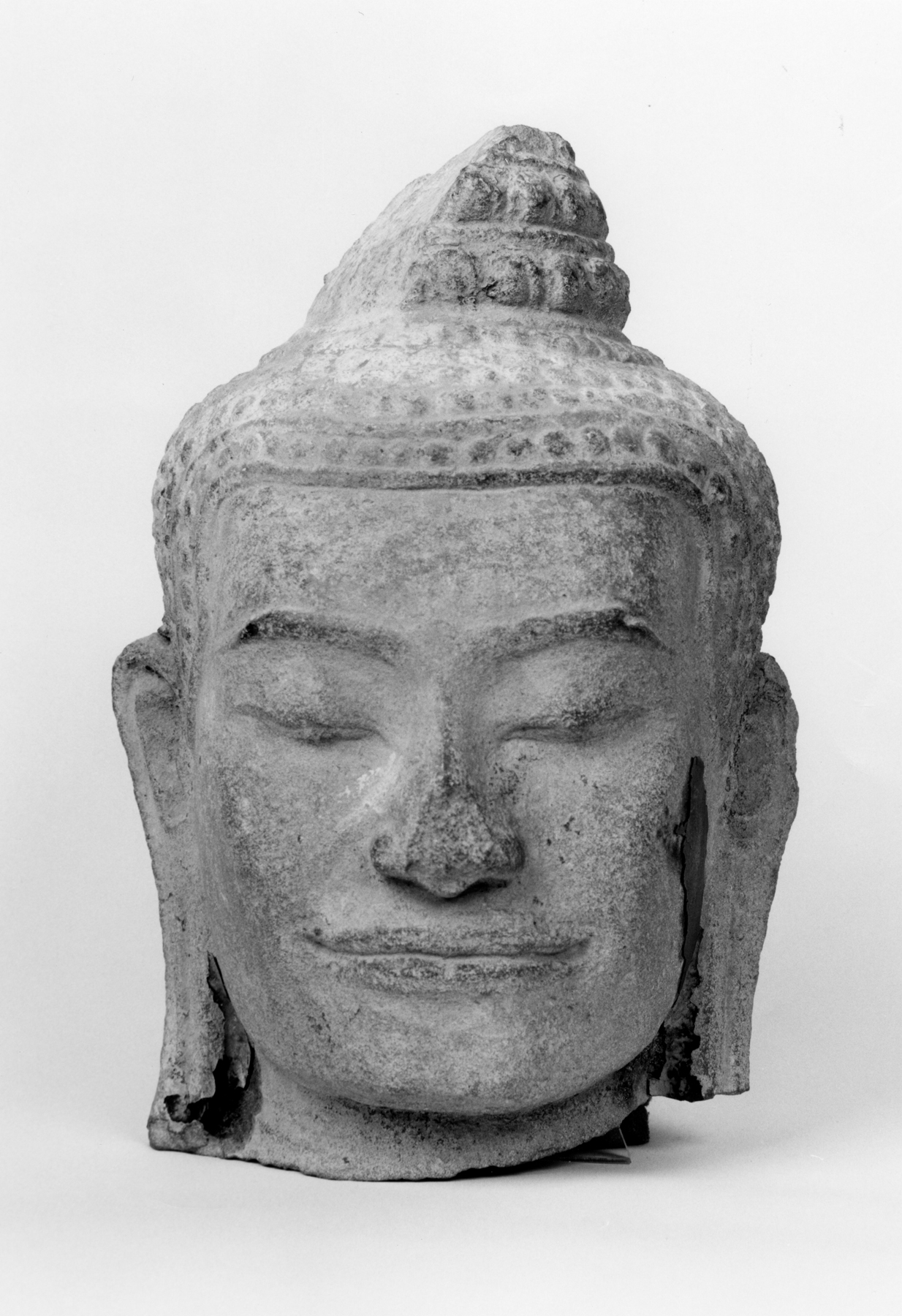Head of a Buddha
(Southeast Asia )
Some of the most interesting and powerful of the Lopburi stone sculptures have a strongly expressive character- achieved by making the volumes of the cheeks relate to those of the chin in a dynamic way, as well as through the manipulation of the outlines of the brows, eyes, and mouth.
The remnants of thick lacquer are likely to date from the late 17th century, when King Narai of Ayutthaya was in residence in Lopburi. A number of the stone images recovered at Lopburi have faces completely covered with lacquer and gilding that transform the original contours into the more angular late 17th-century ideal.
Inscription
Provenance
Provenance (from the French provenir, 'to come from/forth') is the chronology of the ownership, custody, or location of a historical object. Learn more about provenance at the Walters.
Alexander B. Griswold, Monkton, July 1948 [presented to the Breezewood Foundation, inv. no. 442]; Baltimore Museum of Art, 1960, by gift [BMA 1960.54]; Walters Art Museum, 1989, by transfer as gift.
Exhibitions
| 1995 | Unearthly Elegance: Buddhist Art from the Griswold Collection. The Walters Art Gallery, Baltimore. |
Conservation
| Date | Description | Narrative |
|---|---|---|
| 6/16/1994 | Examination | examined for condition |
| 10/1/1998 | Treatment | other |
Geographies
Thailand, Lopburi (Place of Origin)
Measurements
H: 13 3/16 x W: 7 1/2 x D: 7 1/16 in. (33.5 x 19 x 18 cm) approx.
Credit Line
Gift of Alexander B. Griswold through transfer from the Baltimore Museum of Art, 1989
Location in Museum
Not on view
Accession Number
In libraries, galleries, museums, and archives, an accession number is a unique identifier assigned to each object in the collection.
In libraries, galleries, museums, and archives, an accession number is a unique identifier assigned to each object in the collection.
25.94


